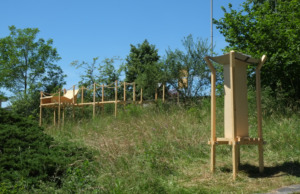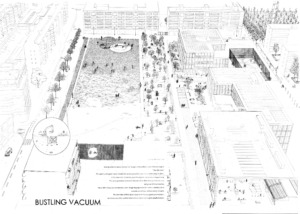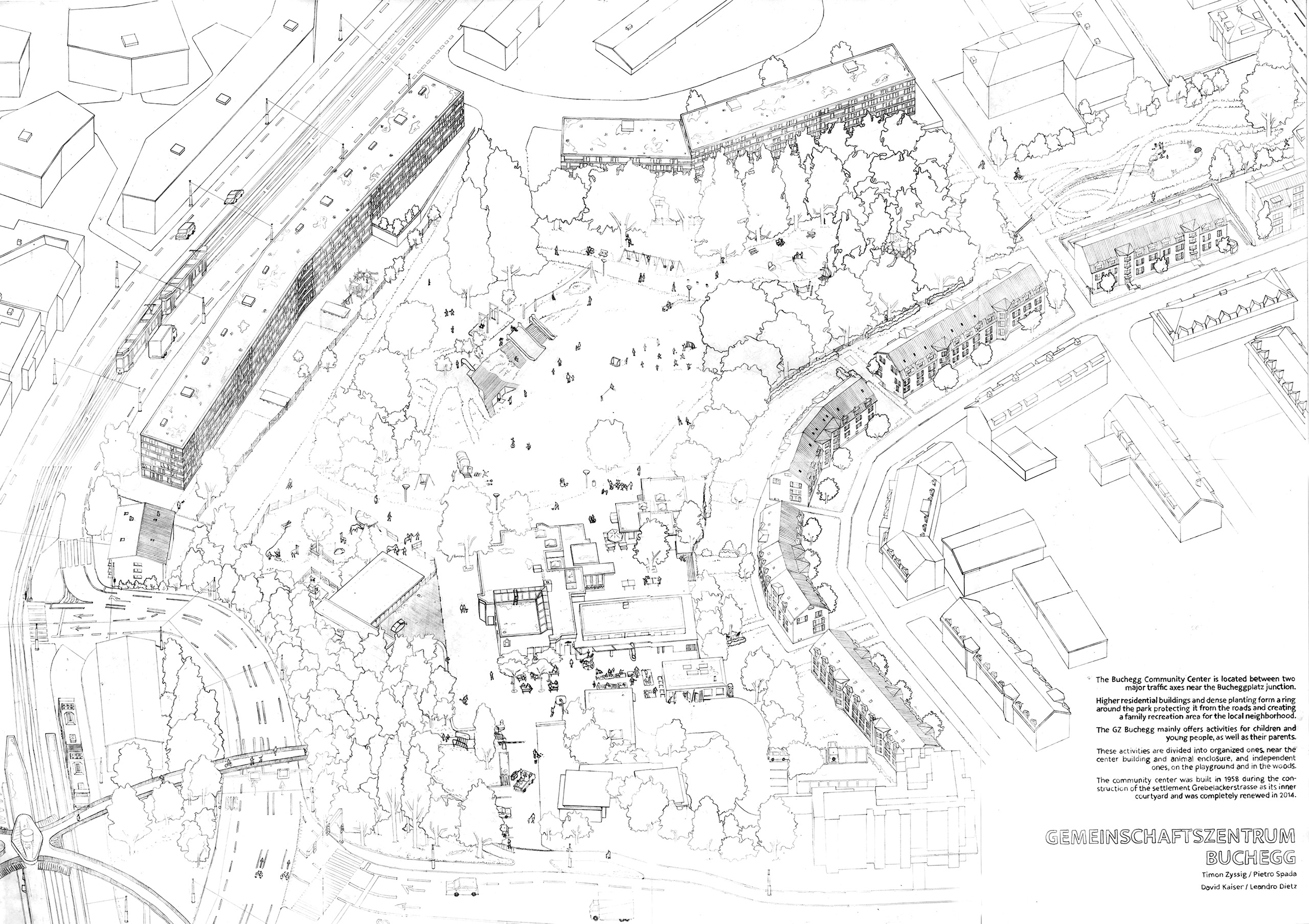FS22
PUBLIC SPACE BEHAVIOROLOGY IN SWITZERLAND
Public spaces fulfill an important role in our civic and urban life. They are places of spontaneous gatherings, demonstrations, markets but also offer spaces for everyday mundane activities such as eating lunch, having a drink, learning how to ride a bike etc. How well the public spaces of a city or neighborhood work has a big influence on life quality for most of the nearby residence. But what makes a space a good public space?
To answer this question, we will use the methods of Architectural Behaviorology as well as follow into the footsteps of previous public space research. By observation of well visited public spaces we try to find the natural, typological and human actors and the rules of interplay between those, which lead to people using a certain place. We will look at what activities are happening in a public space and how the individual actors are enabling these activities. We will explore the tool of drawing as a way of representing gathered data as well as a tool for design.
With these observations in mind, we will turn to not yet well working public spaces in our neighborhood and work on improving them. By designing a small structure or furniture we try attract more people to these spaces and invite them to stay and enjoy these spaces in their neighborhood. By working with models, mock-ups and 1:1 installation we also gather a better understanding of materials and construction and the students learn hands on building techniques.
The working method of the semester will be design accompanied by research. Questions of design are questions of research. Students are asked to formulate one key questions on the relationship between users and public spaces. Students will individually research on how this relationship could be used, strengthen or changed to improve the quality of the public space. This research will influence the design of the furniture or small-scale structure. Finally, we plan to place the structure onto the chosen public space and will observe, if the design has the desired effect on the space. This loop between observation, research, design, construction and observation again serves as a basis for students to question their design work, further their individual interests and philosophy of design and motivates everyone involved to keep continuously learning.





















